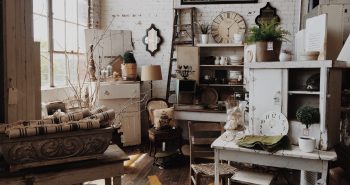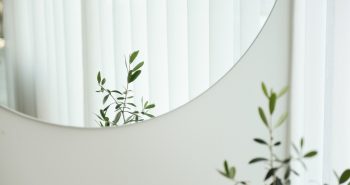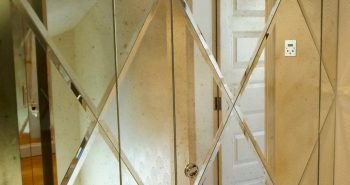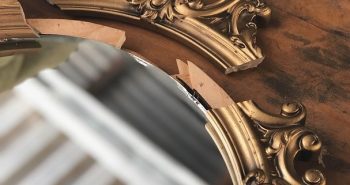The Types of Antique Mirror
A Brief History in Mirrors Framed antique mirrors are sought after in the world of interior design. They adorn the walls of many households and businesses who like to hold themselves with a certain aesthetic. They are indeed a thing of beauty and are enriched in history – stemming from a time where only the richest of…
A Brief History in Mirrors
Framed antique mirrors are sought after in the world of interior design. They adorn the walls of many households and businesses who like to hold themselves with a certain aesthetic. They are indeed a thing of beauty and are enriched in history – stemming from a time where only the richest of the rich could afford them. Now, the types of antique mirrors are many, and the frame material and design style coupled with the distressing of the mirror glass itself, distinguish one mirror from another. Each antique mirror seems truly unique – here, we’ll explore all the different styles history has to offer.
A mirror, previously referred to as a “looking glass” were first fired in the 16th century in Murano before being sent to Venice to be silvered. The UK was not producing its own looking glasses until the 17th century. Even when mirror glass was being built in the UK, only small plates could be made. This reduced the creator’s ability to make larger-scale mirrors, and also limited their overall quality. Freestanding mirrors did not come around until the end of the century, so the vast majority of mirror glass at this point was hung and displayed. By the late 18th century, creators were able to utilise larger plates and create better mirrors. It was also at this point were the traditional rectangle mirror was joined by the oval shape, giving buyers more variety.
It was at this point where framing and style began to change drastically. From elegantly carved wood – typical of the Chippendale period – creators and buyers, moved towards polished frames, far more typical of the Victorian period.
Since their creation, there has been massive variation in style, shape and sizing in mirrors. Where you’re looking for a particular style to match your home, workplace or another interior it helps to know the differences.
Antique Mirror Types
This style, hailing from the 17th century stand out. Traditionally styled with bold golds and silvers – the frame gilding is grandiose and elaborate. The carvings that tend to feature on Baroque mirrors are angelic, floral or inspired by leaves and fruits. The features reflect a Moorish influence – relating to Spanish religious architecture. While the carvings are elaborate, they are not the same as the Gothic style.
In the past, these mirrors were inlaid with ebony or tortoiseshell; modern recreations of the style are highly unlikely to replicate this feature!
When it comes to the way French mirrors are moulded and framed, they are less elaborate than some of their counterparts on this list. In terms of aesthetics, they were generally designed to match the design of a chimney breast as they were most commonly hung here.
Their simple, yet highly geometric design, is adorned by columns, hand bevelled designs and panelling. This simplistic yet pretty design standard made them perfect for highlighting the focal point of a room, especially in high ceilinged establishments.
Typically, the Georgian mirror reflects simplicity in design – often opting for symmetry between top, bottom and sides of the frame. The mirror, portrait and simple in design will most likely sit in a wooden frame with symmetrical scrolled sides with perhaps some beading. In some cases, the mirror frame will include a feature along the top that is not reflected along any other side.
Elaborate in their design, and highly likely to be reflecting the look of a church window, the Gothic mirror was a popular choice between the 12th and 16th century. The frame of this design will include scrolling of edges alongside pointed arches at the top of the mirror.
This style was later readopted and repopularised in the 19th century. Designs focused around a framed oval design constructed from walnut or oak. However, many contemporary designs have metallic frames, darker colours and adorned with features representative of gothic architecture.
Commonly framed in silver and gold metal, the Neo-Classical mirror will have a medallion or another design along the top with sides that resemble columns. The frame design is highly influenced by the architectural style of the 18th Century Italy. These mirrors are cathedral in shape with rectangular mirrors.
The exciting designs on the frames of these mirrors reflect all things nature. Flowers, leaves, feathers and birds adorn the top of the frame. Some mirrors would have a decorative painting on the back of the mirror – traditionally highlighting the beauty of nature. The rest of the structure is more simplistic in its design, featuring either lines or beading. Symmetrical mouldings alongside a mirror which is sometimes an oval with a flat bottom, reflecting a cathedral are a recognisable feature of this style.
Recommended Articles
-
How to Use Smoked Antique Mirrors in Interior Designing
4 years ago4651 views -
How to Identify Safety Glass
4 years ago24289 views -
How To Hang A Glass Mirror
12 months ago1467 views -
A beginner’s guide to bevelled glass
1 year ago972 views -
How to Clean an Old Antique Mirror & Frame
4 years ago38391 views -
Why are mirrors important for your gym?
4 years ago2763 views







